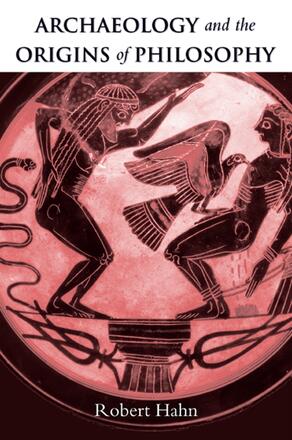List of Illustrations
Preface
Acknowledgments
Introduction
Part I. Archaeology and Anaximander's Cosmic Picture: An Historical Narraitve
1. Anaximander, Architectural Historian of the Cosmos
A. Why Did Anaximander Write a Prose Book Rationalizing theCosmos?
B. A Survey of the Key Techniques that Anaximander Observed at the Architect’s Building Sites
C. An Imaginative Visit to an Ancient Greek Building Site
D. Architectural Planning
2. Anaximander’s Cosmic Picture: The Size and Shape of the Earth
A. The Doxographical Reports
B. The Scholarly Debates
C. The Archaeological Evidence
C.1. The Column and its Symbolic Function in Archaic Greece
C.2. Archaeological Evidence for Archaic Column Construction
3. Anaximander’s Cosmic Picture: The Homoios Earth, ‘9’, and the Cosmic Wheels
A. The Doxographical Reports
B. The Scholarly Debates over the Text and its Interpretation
B.1. The Earth is Homoios in the Center
B.2. The Cosmic Numbers
C. The Archaeological Evidence
C.1. Architectural Plan Techniques for Laying Out the Ground-Plan
C.2. The Archaeologist’s Idea of Technological Style
4. Anaximander’s Cosmic Picture: The “Bellows” and Cosmic Breathing
A. The Doxographical Reports
B. The Scholarly Debates over the Text and its Interpretation
C. The Archaeological Evidence
C.1. Smelting
C.2. Melting and Forging
C.3. Two Forms of Bellows
5. Anaximander’s Cosmic Picture: The Heavenly“Circle-Wheels” and the Axis Mundi
A. The Doxographical Reports
B. The Scholarly Debates over the Text and its Interpretations
C. The Archaeological Evidence
C.1. The Archaeological Evidence
C.2. The Archaic Greek Wheel and Axle
C.2.A. Fixed Axle: Chariots of the Mainland
C.2.B. Fixed Axle: Chariots of East Greece
C.2.C. Fixed Axle: Carts and Wagons
C.2.D. Rotating Axle: Carts and Wagons
C.3. Anaximander and the Chariot Wheel, Revisited: Cosmic Wheel and Axle, Cosmic Tree, and Axis Mundi
6. Anaximander’s Cosmic Picture: Reconstructing the Seasonal Sundial for the Archaeologist’s Investigations
A. The Doxographical Reports
B. The Scholarly Debates over the Text and its Interpretation
C. Reconstructing the Sundial for the Archaeologist’s Explorations
D. Objecting Arguments and Summary
Part II. Archaeology and the Metaphysical Foundations of an Historical Narrative About the Origins of Philosophy
7. The Problems: Archaeology and the Origins of Philosophy
A. The Problem of Philosophical Rationality and Cultural Context
B. The Problem of Archaeology and Greek Philosophy
8. What Is the Archaeologist’s Theoretical Frame When Inferring Ideas from Artifacts? A Short Historical Overview of Theoretical Archaeology
A. How Is Archaeology Relevant to a Philosopher’s Mentality?
B. A Synoptic Overview of Archaeological Theory
C. Postprocessual or Interpretative Archaeology
D. Some Conclusions About Archaeological Interpretation
9. The Interpretative Meaning of an Object: Grounding Historical Narratives in Lived Experience
A. The Imaginative Meaning of an Artifact
B. Hermeneutic and Pragmatic Interpretations
B.1. Digging for Meaning: Hermeneutic Play, Interpretation and Archaeology: What is a thing?
B.2. Pragmatic Interpretations: From Material Context to Imagining Thought
C. Philosophical Strategies for Making Sense of the “Real”
C.1. Quine and Davidson: The Indeterminacy of Translation and Radical Interpretation
C.2. Putnam’s Internal Realism or Historical Realism
C.3. Searle’s Empirical Realism and Social Construction of Reality
10. The Embodied Ground of Abstract and Speculative Thought
A. The Matter of Mind: An Archaeological Approach to Ancient Thought
B. John Dewey and William James on the Context of Consciousness
C. Thinking Through Metaphor and the Body of Knowledge
11. Archaeology and Future Research in Ancient Philosophy: The Two Methods
A. The Method of Discovery
B. The Method of Exposition
12. The Application of Archaeology to Ancient Philosophy: Metaphysical Foundations and Historical Narratives
A. The Realism in Narrative Accounts
B. The Hopelessness of Metaphysical Realism
C. Crafting a Case for “Experiential Realism”: The Argument of Part II
D. The Presence of the Past and the Problem of the Supracelestial Thesis
Notes
Bibliography
Index
